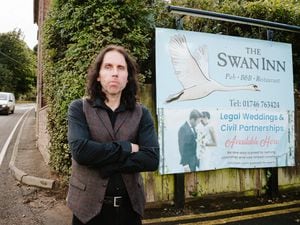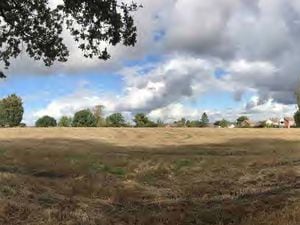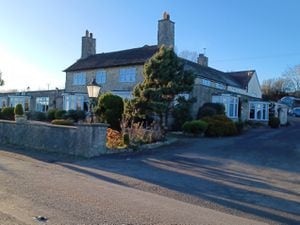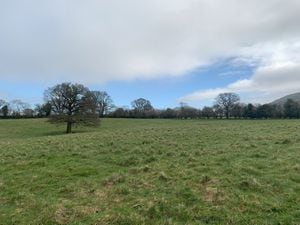'Our towns must expand to thrive': Shropshire Council says green belt homes are a necessary evil
The prospect of building on the county’s green belt has provoked significant criticism – but Shropshire Council says it is ready to defend the plans as the best way of tackling issues faced by towns.
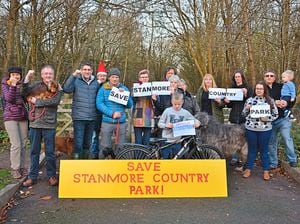
Plans for thousands of homes in Shropshire are vital to stop the decline of communities and ensure controlled development.
That is the message given today by the man in charge of a ‘preferred sites’ consultation for work up until 2036.
Shropshire Council planning expert Adrian Cooper says the plan for 28,750 new homes is the only way to protect communities from speculative developers, and to prevent towns falling into decline.
He said: “There is a reason – we are not just doing this because we want to upset people. We are doing it to stave off a worse outcome.”
Vote in our poll:
All of Shropshire’s towns and villages feature in the plan, which varies from the modest to the large scale plans for hundreds of homes in both Shifnal and Bridgnorth.
Mr Cooper, the council's planning policy and strategy manager, said that the impact of a lack of affordable housing was affecting communities across the county, and particularly Bridgnorth, and having a knock on effect on employers and the availability of jobs.
He said: ““If we do not make provision for business to remain and grow and expand and attract and retain employees then they will move and that’s really harmful because it exacerbates existing issues you have in towns like Bridgnorth.”
Green belt homes ‘a necessary evil’
Campaign groups in Bridgnorth and Shifnal have been outraged by Shropshire Council plans for development, with sections of green belt earmarked for future development and the prospect of more than 28,000 new homes.
Permission to build on the green belt is only allowed in exceptional circumstance – something campaigners have insisted does not exist – but a senior council official has moved to defend the plans, particularly in relation to Bridgnorth.
Under Shropshire Council’s preferred sites consultation, land across the county is allocated for where houses and businesses can built up until 2036. The plans are yet to be fully approved by the council and there will be another round of consultation.
It also needs to be approved by a government inspector.
For Bridgnorth a large section of green belt at Stanmore is being allocated for development after 2036, and areas are also included in Shifnal.
The choice has sparked a strong reaction from campaigners who have vowed to resist the proposals.
Mr Cooper said: “In both Shifnal and Bridgnorth the difficulties for some areas is it is in the green belt – somewhere people do not expect to see development and it is more difficult to justify that outcome.
“We say in both cases there is a strong argument in the case of intervention because if you do not do something there are some real risks those places will decline, lose employment opportunities, housing will decline and a whole section of the community risks being disenfranchised over decades.”
Asked about the attitude towards building on the green belt Mr Cooper said: “The way government policy works is no, you should not be looking at it.
“We need to produce good reasons and evidence to justify the outcome.”
Policy will help prevent decline
The planning manager said the council believes the policy is necessary to prevent the decline of the area.
He also said other options for providing the housing in other areas had been looked at and discounted.
He said: “Local circumstances are such that if we do not do something that is being proposed, in effect that outcome justifies the change because you can already see evidence of negative impact, of businesses relocating, local employers being restricted, wage level being relatively poor, affordable housing being limited and all of the social outcomes that come from those changes.
“You could take it and put it in another town. Shrewsbury or a different set of sites that are not in the green belt. What we are saying is we have looked at those options and this is, as far as we are concerned, the best way to tackle the issues Bridgnorth faces in the long term. And we therefore think it is justified to do that. We accept there will be differences of opinion and expect there to be.”
Mr Cooper also said there was pressure from local employers over the need to provide homes for potential workers – a claim which has been questioned by Bridgnorth campaigners.
He said: “In particular in Bridgnorth, local employers are really struggling to retain employees. There are not houses for people on the wages they pay.”
Asked if companies had come forward to raise their concern Mr Cooper said: “Yes, through things like the chamber of commerce and the LEP, these are what spurred the concerns.
“This is an issue that pertains to the local economy in Bridgnorth
“We have had a situation in recent years where we have lost businesses, they have chosen to relocate into Telford or the West Midlands because either they could not get enough space to expand and they needed the space to stay where they were.
“Part of that mix is also access to staff, and it is a bit of a vicious circle and has informed why we have chosen to intervene in the way we have with the local plan.
“Because if we do not make provision for business to remain and grow and expand and attract and retain employees then they will move and that’s really harmful because it exacerbates existing issues you have in Bridgnorth which are about limited employment opportunities for a town of its size and people travelling out of town for work.”
Mr Cooper also said that some of the development which has taken place in Shifnal is the result of not having a plan, and that they are seeking an organised approach to ensure associated infrastructure is built.
He said: “Much of the development in Shifnal now was not planned. It was not in the local development plan. It happened because you do not have five years of housing land set aside so the industry was able to argue it should be able to build on land in Shifnal that had not been allocated for that purpose.”

